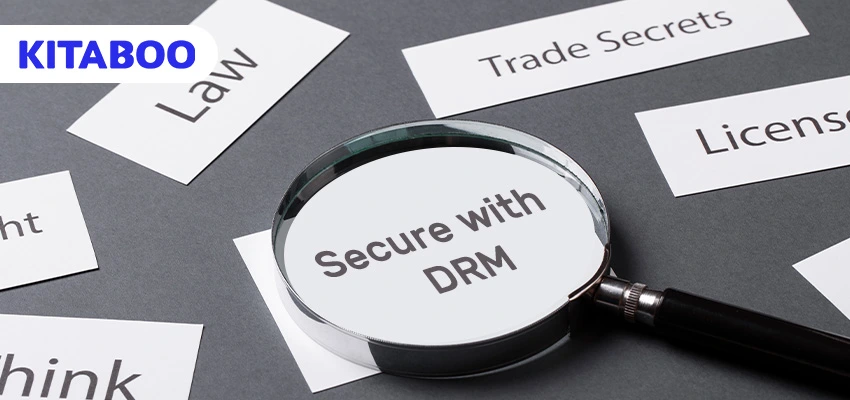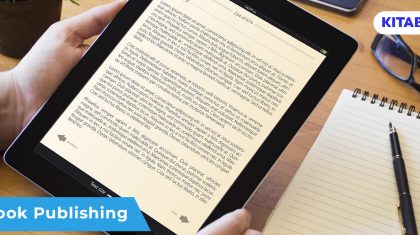
The Advantages of DRM in the Publishing Industry (2025)
Advantages of DRM in the Publishing Industry – TL;DR
Summary of Advantages of DRM in the Publishing Industry (2025)
Advantages:
Extra Layer of Protection: DRM prevents unauthorized access, copying, and sharing of digital content.
Protects Revenue: DRM stops illegal downloads, safeguarding sales and revenue.
Increased ROI: DRM enables direct sales, reduced overhead, and global distribution without delivery costs.
Access Control: DRM defines user access rights, including time limits and device usage.
Prevents IP Theft: DRM stops unauthorized distribution and enables usage monitoring.
Regulatory Compliance: DRM ensures adherence to data protection laws and encrypts content.
Disadvantages:
End-User Restrictions: DRM limits device compatibility and user experience.
Incomplete Piracy Prevention: DRM cannot fully stop piracy; determined users can bypass restrictions.
License Issues: Expired licenses can block access to purchased content.
Conclusion:
DRM is essential for protecting digital content and revenue in publishing.
While DRM has drawbacks, its benefits—protection, control, and compliance—make it a vital tool.
We all know how simple and easy it is to distribute and share content on the Internet. However, creating original content is time-consuming and requires lots of mental labor. So, it goes without saying that as a content creator, you would like to retain its complete ownership and intellectual property rights. However, this is easier said than done for online content. Take the case of music, every time someone downloads a music file or shares with others, the music company loses its revenue. The very nature of the Internet makes file sharing a piece of cake. In the case of sharing material on the internet, traditional copyright laws don’t hold good because it is very difficult to monitor those who break the law. This gave rise to the need for a different kind of digital security to protect online content. This need to protect online content from illegal downloads and sharing prompted the birth of digital rights management, or DRM.
Simply put, DRM is a technology used to protect the intellectual rights of online content. With DRM, digital content ownership passes from the content owner to a computer program. Using DRM, publishers can block forwarding of sensitive emails on their servers, restrict access to and prevent unauthorized copying and printing. Basically, with DRM, publishers can control their data, software and hardware.
Related Read: 6 Reasons Why You Need DRM Protected eBook
There are several pros and cons of DRM for the publishing industry, here in this article we look at both sides of the coin.
What are the Advantages and Disadvantages of Enabling DRM Protection?
Top 6 Advantages of DRM Protection
An Extra Layer of Protection
The key benefit of DRM for publishers is that it provides an extra layer of security for their eBooks, manuscripts, and other documents. The software thus prevents unauthorized access, copying and sharing of content. It prevents the intellectual property from being stolen, just as a physical lock prevents the stealing of personal property.
Related Read: 7 Effective Ways to Combat eBook Piracy in Publishing
Protects Revenue
You can publish content online with reduced costs and once published, create as many copies you want or even modify or remove with minimal overhead costs. Besides, you can also take the relatively low-cost online marketing route to amplify the visibility of your eBooks, expand audience reach, improve sales and thereby add to your revenue. However, if the content is not DRM-protected, it will encourage piracy, illegal access, copying and sharing, leading to loss of revenue.
Increased ROI
Apart from the fact that you can publish your eBooks at minimal cost, the Internet is also a means to achieve additional savings. For instance, once you have the original copy of the eBook, you can then create as many copies as you wish at no additional cost. Besides, you can sell directly to your online audience with zero delivery charges. You can also incorporate different online payment methods on your website and sell to an international audience. All these additional savings will be lost if your intellectual property is not DRM-protected. With DRM, you can significantly improve your ROI and this can be possible only if you retain complete ownership of your copyright material.
Control Access to Your Content
DRM not only gives you control over who views your content but also how many times they view it. For example, for a certain fee, they can browse through your online encyclopedia or research journal multiple times. Once they reach the set limit, they will no longer be able to view it. With DRM, you can also restrict printing rights so that people don’t take copies of the work and then plagiarize for their own purposes.
Prevent IP Theft
DRM prevents theft of IP either done deliberately or unintentionally. It also allows you to control who views your documents. Besides, you can also monitor if the users have made any attempt to plagiarize or share it with other people without proper authorization.
Also Read: 7 Ways to Protect Your eBooks from Online Piracy Now!
Ensure Regulatory Compliance
As a digital publisher, you also have to make sure that your content meets all regulatory compliance, is encrypted, and that you have a user’s license to prevent any unauthorized access. It may be that you have to deal with third-party vendors or external teams. In this case, you will need to provide them authorized access to your copyright content because the responsibility to maintain confidential information is entirely yours. To ensure the confidentiality of your data, you have to comply with several regulations. By implementing Digital Rights Management, you can store sensitive data, documents and other information on your personal computer or laptop and share it with the people you want without risking any loss of control.
Top Disadvantages of DRM
End-user Restrictions
While the DRM gives complete control to the digital publishers on their copyright content, it may create inconveniences for the end-users. For instance, most readers would prefer access to their eBooks or documents on multiple devices but with DRM this may not always be possible. To explain this with an example, your eBook is available on Kindle. With DRM, it is likely that your readers would not be able to access it on non-Kindle devices. This could lead to annoyed customers who may then refuse to purchase DRM-enabled books. However, platforms like KITABOO can give readers access to content on multiple devices across operating systems.
Restricts But Does Not Prevent Complete Piracy
Enabling DRM is putting a digital lock on your content, however, it will also keep out the honest people. While it does restrict dishonest people, it also prompts them harder to break the code. At the end of the day, it does prevent piracy to an extent but can’t stop it completely. Consider someone clicking images of the eBook and circulating them illegally.
Other Considerations
Digital Rights Management works heavily on licenses. However, the problem with licenses is that they can expire, leaving the consumers unable to access the content they have paid for. DRM-enabled content is not very popular with a majority of consumers as it has various compatibility issues.
In Conclusion
The Internet has simplified the publishing process and enabled publishers to reach a wider audience at minimal costs, allowing them to distribute their eBooks, journals and documents using online marketing. By adding various payment options they can sell their content online to a global audience without the need of retailers. However, the Internet enables easy file sharing, which for digital publishers translates into loss of revenues and copyright of their Intellectual Property (IP). In the online arena, traditional copyright laws are ineffective. Digital Rights Management, on the other hand, to a large extent enables publishers to keep control over their content, allowing them to limit and monitor its use and monetize it to their benefit.
However, as with other things in life, DRM has its limitations as it can restrict end-user’s control over their purchase and put them off from purchasing DRM-enabled books. Also, while DRM can prevent piracy to an extent it can’t stop it altogether. So what does this mean for the publisher? DRM does allow you to retain control over your content to a large extent. The only thing is you will have to live with the restrictions because the pros far outweigh the cons.
Contact our expert team now and get started!
To know more, write to us at contact@kitaboo.com
Suggested Reads:
- Finding the Best ebook Creator | 10 Best ebook creation software
- How to Identify the Best eBook Conversion Services
- 9 Best Cross-Platform eBook Readers
- Best Practices in Publishing & Distributing eBooks at Scale
- Best eBook Publishing Strategies Every Publisher Must Know!
- How to Create an Interactive eBook in 10 Steps
- How to Select the Best Digital Publishing Platform
- Is Online Education Better than Traditional Education
- Point Guide for Switching to ePublishing from Traditional Books
- K12 Publishers
- Associations & Societies
- Trade Publishers
- Training Companies
- Content Aggregators
Discover how a mobile-first training platform can help your organization.
KITABOO is a cloud-based platform to create, deliver & track mobile-first interactive training content.



